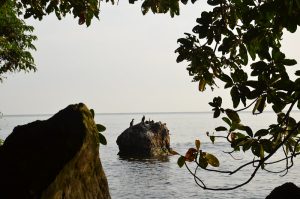Vundu Catfish: The Largest Freshwater Catfish In Southern Africa
The Vundu Catfish (Heterobranchus longifilis) is the largest air-breathing freshwater catfish and fish in Southern Africa. In Africa, it is identified by different names which include cur, lenda, certa, and sampa.
A couple of other names they are known for are the mazunda fish and the solomon fish.
It is the largest fish in the Zambezi river system, reaching lengths up to 150 cm and a weight of 60 kgs.
They are an essential source of animal protein in various regions of the world. The reason being that it has an omega-3-rich fillet.
This species is becoming rare which is why they are a catch and unleash species. To safeguard the species from extinction, fishermen are urged to employ the catch and release method.
Vundu Scientific Classification
Where Are Vundu Found?
They are found widely in rivers and freshwater habitats of sub-Saharan Africa, only extending on the far side in the Nile region.
It’s found in the:
- Volta River
- Gambia River
- Senegal River
- Benue River
- Lake Chad
- Omo River
- Niger River
- Congo River Basin
- Lake Rukwa
- Lake Edward
- Lake Tanganyika
In Zimbabwe, it is found in Lake Kariba, (the biggest lake in Zimbabwe), the Zambezi River, the Chirundu area, and the Kanyemba area.
Vundus usually identified by a very lurid splash showing their presence in a particular area. Time and again the brief sight of their paddle of a tail as it drives down is seen.
In the Zambezi River, you can habitually see them resting on the bottom and on sandbars.
Vundu Fish Anatomy
It is rather large, strange looking and often confused with the Barbel fish.
This catfish is long and muscular. It has a protracted, broad head, a broadly rounded snout, and super lateral eyes.
No other catfish in these waters have such a large second dorsal fin, nor such long barbells which reach almost to the origin of the pelvic fin. The extra-long barbels are used to hunt in the murky water.
They have ineffective eyesight and they rely on vibrations and smell when looking for food.
It is a light to dark olive-brown on its dorsal surface, getting lighter over the mid-body to a light brown, off-white belly. The fins are usually a light brown.
A special breathing organ enables them to absorb more oxygen from the air in addition to their gills. Aerial respiration enables the fish to survive in extreme conditions with low amounts of oxygen.
Their air-breathing aptitude allows them to endure dire circumstances like drought. In these times the fish often lie tightly crowded together in what water is available.
In the course of the dry season, they often rest in the mud of marshy ponds for weeks until the next rainy season.
It can also endure being out of water for a long period.
The Vundu life span is about 12 years.
What Do Vundu Eat?
Due to the ineffective eye site of the Vundu fish, it depends on vibrations and its sense of smell to hunt its food.
These catfish species are omnivorous but can also be cannibalistic.
Vundu is known as a bottom-feeding river species and is most active scavenging at night. They satisfy about three-quarters of their dietary needs after nightfall.
The species feed on any available food including insects and invertebrates when young. They then move on to fish, small vertebrates, and any carcasses and offal found in the water in maturity.
Reproduction
The main breeding period is during the rainy seasons. When the Vundu wants to breed they travel into the side arms of big rivers which overflow in the rainy season and flood neighboring flat zones.
If food or breeding conditions are deficient they will go ashore in quest of supplementary suitable habitats.
The female can breed lay between 6 000 to 51 000 eggs.
They are becoming rare in habitats like Lake Kariba. This catfish should always be released back into their freshwater habitat as their numbers are dwindling.
They are only found below the Victoria Falls – there has been no recorded catch above the falls.
Vundu Fishing
Vundu put up a decent fight and they have high power and stamina. They can be found in deep waters but favor depths of between 10-30 feet in size.
For one to catch a Vundu one needs larger baits and heavier tackle.
The baits which are usually used by anglers include:
- ox livers
- hearts
- kidneys
- plucked birds
- meat
- fish that have been turned inside out
- beef
- chicken pieces
- cow heart
- a piece of a brown bar washing soap works well
These cast an attractive aroma for them to follow.
Recommended fishing apparatus includes a long sturdy single hook with an 80lb mono-trace plus a running sinker.
Strength is also needed since the Vundu is powerful and it puts up a strong fight. One is advised to cast the bait between six to ten feet from the shoreline in shallow water.
If you are looking for a destination to fish this unusual species The Abangane Houseboat at Binga, in Zimbabwe, is an affordable option for you, your family, and friends.
Largest Vundu Ever Caught In Africa
The biggest freshwater catfish caught in Africa is a Sharptooth Catfish. This giant vundu weighed in at a very impressive 36 kilograms.
The catch was made in South Africa in the Orange River near Upington.
Conclusion
The Vundu or Freshwater Catfish is the strongest, largest, and most fierce predator. Its ability to use vibrations and its sense of smell to hunt its prey is prodigious.
Vundu Catfish ability to survive for a long time out of water is impressive.
However, they face the fate of extinction. Therefore, one is encouraged to catch and release so that they can reproduce. Let Abunda Discoveries Uganda be your trusted partner in this exploration




